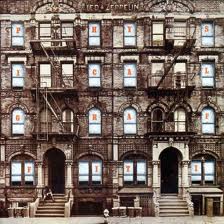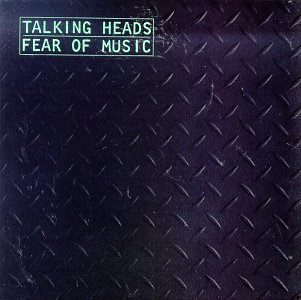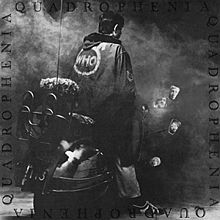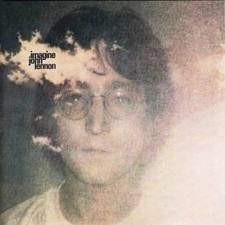We’re in the home stretch, folks! Just three more installments left in this series after this one. What do you think our next list should be? Email us at popblerd1@gmail.com with any ideas.
Also, a reminder to email us at the same address with your guesses for the top three albums (they do not have to be in order.) If you’re correct, you will be entered to win any of the 100 CDs on our list (or digital versions.) Of course, there are a couple of rules: 1) whichever album you pick has to be currently in print, and b) non-U.S. residents are not eligible (sorry, foreign Popblerd friends!)
If you need to backtrack, you can check out Part 1, Part 2, Part 3, Part 4 and Part 5. Oh, and Part 6!
 40. Physical Graffiti (Led Zeppelin, 1975)
40. Physical Graffiti (Led Zeppelin, 1975)
Appears on: 7 lists | #5 on Jay K.’s list.
Zeppelin fans have been debating for years which of the band’s eight studio albums is best (not including 1982’s outtakes collection Coda): Many point to Led Zeppelin II, but arguments can be made for the debut, Zeppelin III, IV and Houses of the Holy; if there are folks voting for Presence or In Through the Out Door, well, that’s their problem). For me, 1975’s Physical Graffiti packs the most power. Part of that may be because many of the songs haven’t been played to death on rock radio over the years. Honestly, does anyone over the age of 30 need to hear “Stairway to Heaven” ever again? It’s one of the greatest songs ever written, but it’s totally played out for me. On Physical Graffiti, only the epic “Kashmir” approaches that territory, but its overwhelming awesomeness always wins me over. By the time the band started recording in 1974, it was at the height of its popularity and power. Zeppelin quickly recorded eight devastating rockers, including “Kashmir,” “Custard Pie,” “In My Time of Dying” and “Trampled Underfoot,” before realizing they already had more than a single record’s worth of music in the can. They then dusted off some of the unreleased songs they’d recorded over the previous four years, including “Houses of the Holy,” “The Rover,” “Night Flight” and “Down by the Seaside” and stretched the album into a behemoth of a double album. The additional songs provided a good counterbalance to the louder new material, ranging from acoustic numbers (“Black Country Woman”) to the lazy summer feel of “Down by the Seaside.” Musically, Zeppelin was at its peak, with singer Robert Plant equally adept at belting out the loud stuff and crooning the quieter songs, although his best performance was on the 11-minute blues lament “In My Time of Dying.” Jimmy Page once again unleashed a guitar tour de force and John Paul Jones was band MVP, not only playing ace bass but numerous other instruments; his funky clavinet riff on “Trampled Underfoot” is superb. But it’s John Bonham who dominates the album with the sheer power of his playing throughout. There’s so much going on musically in “Kashmir,” but at its core, Bonham makes it one of the greatest air drumming songs ever. It seems like Physical Graffiti is underrated, and yet it went to #1 on the album charts and was certified 16x platinum in the U.S. alone. Even so, after all these years, I always find something fresh and interesting whenever I listen to it. (Jay)
39. The Wall (Pink Floyd, 1979)
Appears on: 6 lists | #5 on Michael Mario’s list, #7 on Jon C.’s list
Released one month before the end of the decade, The Wall is the ultimate in seventies prog-rock excess, neatly packaged for a mass audience. It is a concept album taken to its limits, replete with an extravagant stage construction, a theatrical production including an ensemble of dramatic characters, a full orchestra, and eventually a feature-length film directed by Alan Parker. Released three years after the punk rebellion against such pretentious endeavors, the double album scoffs at punk’s minimalism and is unapologetic in its excess and pretense. The genius of the album is that its ostensible narrative is one that challenges the ethos of arena rock and the barriers between musicians and their audience in the genre, while simultaneously luxuriating in those very excesses. The Wall brutally criticizes the very thing that it exemplifies. In “Outside the Wall,” the final track and narrative denouement of the album, Roger Waters offers a glimmer of hope and a call to arms after over an hour of despair, pleading that “the bleeding hearts and the artists take their stand.” This anti-establishment idealism was seductive enough for over thirty million fans to demonstrate their commitment to those ideals, and shell out twenty bucks to the Columbia Recording Corporation. (Michael Mario)
 38. Fear of Music (Talking Heads, 1979)
38. Fear of Music (Talking Heads, 1979)
Appears on: 6 lists | #16 on Drew’s list
A now-deleted editorial from an earlier incarnation of Rhino’s website made the claim that if Remain in Light is the Talking Heads’ Sgt. Pepper, Fear of Music is their Revolver. I normally wince at comparisons to the Beatles, for they often seem either trite or too sweeping to carry any real meaning. But in this case, the comparison is apt. While great, the Talking Heads’ first two albums were fairly straightforward, traditionally arranged, art-school influenced rock n’ roll. This suited the band well, but it gave them precious little space to flex their muscle beyond jumpy, quirky, rock tunes. With 1979’s Fear of Music, the Talking Heads took an adventurous turn that was not fully realized until Remain in Light. Thus, like Revolver, Fear of Music is a transitional album that moved the Talking Heads from more standard fare into the more artistically enterprising albums that followed.
Fear of Music is also where the band started to blend more non-Western influences into their emergent brand of funky pop-rock. Album opener “I Zimbra” is a chant-driven vamp that exhibits clear influence from the Afrobeat of Fela Kuti, whose influence would creep into many of the band’s 1980s albums. Fear of Music also set the precedent for David Byrne’s lyrical style: that of focused examinations of the everyday and taken for granted, making explicit the anthropological maxim to “make the familiar strange” (e.g. “Air,” “Paper,” “Animals”). Yet at the center of it all are the album’s two most forceful tracks, “Life During Wartime” and “Memories Can’t Wait.” This one-two punch closes Side 1 with irresistibly danceable lyrical paranoia, just one of the album’s many notable juxtapositions. Fear of Music is a critics’ favorite in the Talking Heads oeuvre, as notable for its own merits as for what it foreshadowed in the band’s artistic progression. (Dr. Gonzo)
37. Toys in the Attic (Aerosmith, 1975)
Appears on: 9 lists
Unfairly derided as a Rolling Stones rip-off act when they first hit the scene in the early ’70s, Aerosmith established itself as a hard rock force to be reckoned with on 1975’s Toys in the Attic. This was long before the band trafficked in sappy ballads featured in videos starring Alicia Silverstone. No, Aerosmith in the ‘70s really were the bad boys from Boston. In addition to consuming whatever illicit substances were within a 10-mile radius, the band made some of the grittiest, grimiest blues rock around. Toys in the Attic was chock full of future classics: The title track, “Walk This Way” and “Sweet Emotion” are classic rock staples, but it’s the deep cuts that resonate to this day: “No More No More,” “Adam’s Apple,” “Round and Round” and “Uncle Salty” are all satisfying groove rockers powered by the guitar interplay of Joe Perry and Brad Whitford. Before he became better known for his rehab stints and American Idol appearances, Steven Tyler was a damn fine rock vocalist and frontman; he did a lot less screeching in the early days, picking his spots more effectively. Even “Big Ten Inch Record,” a cover of Bull Moose Jackson’s risqué 1952 hit, became a fan favorite. The album closes with “You See Me Crying,” a piano- and strings-driven ballad that carried real power and emotional weight, unlike the schlocky “I Don’t Want to Miss a Thing” (recorded 23 years later for the film “Armageddon”). Toys in the Attic only hit #11 on the U.S. album charts, but it eventually sold 8 million copies and remains the band’s biggest-selling album. And when the band’s career was on the skids in 1986, it was a version of “Walk This Way” recorded with Run DMC that gave Aerosmith a new lease on life. (Jay)
36. Superfly (Curtis Mayfield, 1972)
Appears on: 6 lists | #20 on May’s list, #16 on Big Money’s list
With the release of Superfly, a new era in Black film and Black music was born. Curtis Mayfield had already enjoyed a fifteen-year run of success as a solo artist and as one of the Impressions, but the soundtrack to this movie, one of the first of the Blaxploitation era, cemented his legend and arguably was the greatest contributing factor to his induction in the Rock & Roll Hall of Fame. Talk of pimps, drugs and hustlers in songs like “Freddie’s Dead” and “No Thing on Me” also presaged the rise of hip-hop, both as a social commentary and in its more sinister, “gangsta” incarnation. Even devoid of its pathos, though, Superfly is a milestone in soul music-hell, in music period. Curtis’s trembling falsetto, those lush soundscapes, those guitar chords (Curtis Mayfield-underrated guitar player.) It was music you could enjoy irregardless of social content. Marvin Gaye, Bobby Womack and James Brown all took notes – but none of them could match the originator. (Big Money)
35. Wish You Were Here (Pink Floyd, 1975)
Appears on: 5 lists | #19 on Cassandra’s list, #1 on Mike S.’s list, #2 on Dan W.’s list
What happens after your dreams come true? Pink Floyd found itself facing that enviable dilemma in 1974 when, flush with the stratospheric success of Dark Side of the Moon, they convened to record an album that, as they soon discovered, none of them felt any burning desire to make. They dicked around for a few weeks, eventually working up two full-fledged if desultory compositions, “Raving and Drooling” and “You Gotta Be Crazy.” David Gilmour was all for building on this success and calling it a day. Roger Waters was having none of it. He wanted the fledgling album-to-be to address the very malaise that Pink Floyd was presently fighting through, and he channeled his own frustrations into two songs that directly attacked the predatory nature of the music business, “Welcome to the Machine” and “Have a Cigar.”
The album at least had a direction, but it probably goes without saying that had Wish You Were Here been nothing but an album-long whinge about the trials of rock stardom, you wouldn’t be reading this right now. It was two spur-of-the-moment contributions from Gilmour that ultimately led the album to greatness: a folky hammer-on sequence played on his Martin 12-string, and a mournful, pealing four-note riff from his Stratocaster. These were the skeletons of “Wish You Were Here” and “Shine On You Crazy Diamond” respectively, and both touched off a grieving nerve in Waters’ otherwise misanthropic heart, spurring him to some of the most impassioned writing he ever did for Pink Floyd. Wish You Were Here as completed stands as rock’s great elegy, a tribute to the lost Syd Barrett that is by turns bitter, sad and resigned, and that’s infused with a realization that underscores all of Pink Floyd’s best work: underneath it all, we’re all a little lost. (Dan Wiencek)
 34. Quadrophenia (The Who, 1973)
34. Quadrophenia (The Who, 1973)
Appears on: 7 lists | #11 on Jay K.’s list, #15 on Steve R.’s list, #19 on Jon C.’s list
The story of Jimmy the Mod is kind of dodgy and disjointed. The “synth strings” utilized so liberally throughout the album don’t hold up particularly well 40 years on. At times (re: “The Dirty Jobs”), the songwriting borders on musical theater-level sappiness.
Ultimately, none of this matters. Because the sheer force of will that the Who displays on Quadrophenia far outlives its surface weaknesses upon multiple listens until, eventually, those weaknesses become irrelevant. It is the ultimate expression of Pete Townshend’s naïve-yet-ingenious ambitiousness. And it is the living testament of a pioneering hard rock band whose players were at the height of their musical prowess, improvisational cohesiveness, and impregnable confidence upon its release in 1973.
Quadrophenia is not the Who’s finest musical achievement on wax, but it is their magnum opus. It is their final rock opera (arriving on the scene four years after the influential-but-overrated Tommy and two years after the abandoned Lifehouse), and it is their last great album (preceding by two years the forgotten-but-undervalued The Who by Numbers). Never before had the band combined such introspective, angst-ridden lyrics about “human frailty and abandonment,” as Townshend would later say, with such mesmerizingly powerful and aggressive musicianship. It was a strange dichotomy that would ultimately define the band’s legacy, and it reached its most problematic on Quadrophenia. And never again would Townshend nor his bandmates be able to separate the traumatic experiences of the characters on their albums from their own self-destructive behavior. This behavior, and the band’s inability to indulge in it only through narrative, was equally important in defining the Who’s legacy, as it ultimately led to their downfall upon drummer Keith Moon’s death just five years later. (Michael Cunningham)
33. Imagine (John Lennon, 1971)
Appears on: 6 lists | #5 on Jon C.’s list, #15 on Cassandra’s list, #19 on May’s list.
 Imagine may lack the lacerating forthrightness of its predecessor, but it actually presents a more complete portrait of its creator than does Plastic Ono Band. As cathartic and effective as Plastic Ono is, its confrontational stance seems to forsake the healing, liberating aspect of rock and roll that first drew Lennon to the music as a teenager — you don’t really feel better after hearing it. Imagine has its share of pain and outrage, but its heart is ultimately welcoming, and you need look no further than the title song. It’s difficult to overstate the importance of “Imagine” in many respects, not the least of which is its role in cementing John Lennon’s reputation as a kind of secular pop saint, a flawed but honest man who urged people to just try to get along with each other, and paid the ultimate price for it. Whatever your political bent, you can’t help but be touched by “Imagine”‘s almost self-effacing earnestness. It’s a protest song without protest, a reminder (alongside the equally delicate and lovely “Jealous Guy”) of the great beauty Lennon was capable of expressing.
Imagine may lack the lacerating forthrightness of its predecessor, but it actually presents a more complete portrait of its creator than does Plastic Ono Band. As cathartic and effective as Plastic Ono is, its confrontational stance seems to forsake the healing, liberating aspect of rock and roll that first drew Lennon to the music as a teenager — you don’t really feel better after hearing it. Imagine has its share of pain and outrage, but its heart is ultimately welcoming, and you need look no further than the title song. It’s difficult to overstate the importance of “Imagine” in many respects, not the least of which is its role in cementing John Lennon’s reputation as a kind of secular pop saint, a flawed but honest man who urged people to just try to get along with each other, and paid the ultimate price for it. Whatever your political bent, you can’t help but be touched by “Imagine”‘s almost self-effacing earnestness. It’s a protest song without protest, a reminder (alongside the equally delicate and lovely “Jealous Guy”) of the great beauty Lennon was capable of expressing.
As for the healing power of good ol’ rock and roll, it forms Imagine’s backbone: “Crippled Inside,” “I Don’t Want to Be a Soldier” and “Give Me Some Truth” are cathartic but also uplifting, and “Crippled” in particular is almost jaunty, with its skittering rockabilly rhythm and tongue-in-cheek vocal. Of course, one cannot discuss Imagine without making mention of “How Do You Sleep.” And while it’s actually a cool track, with some of the best slide playing George Harrison ever laid down, it’s a shame that the tawdry pissing match between Lennon and Paul McCartney remains embalmed on this record. That McCartney pretty much asked for this bitch-slapping, having foolishly provoked his former partner on Ram, doesn’t alter the fact that “How Do You Sleep” adds a petty and petulant note to an album that otherwise avoids both self-aggrandizement and finger-pointing. It serves to reinforce the fact that Imagine is, indeed, the most well-rounded self-portrait John Lennon gave us, showing the wounded boy who couldn’t let a slight go unanswered alongside the big-hearted man who, deep down, really did love everybody. (Dan Wiencek)
32. Bitches Brew (Miles Davis, 1970)
Appears on 7 lists | #13 on Luc’s list, #16 on George B.’s list, #13 on Michael C.’s list, #19 on Big Money’s list.
Though I’m partial to the pissed-off, angry funk of Agharta (1976) and Dark Magus (1977)—two nasty, ballsy live records—Bitches Brew is where one needs to start if one wishes to begin to understand the journey Miles Davis took in the first half of the Seventies, before addiction made a sad, silent hermit of him for the latter half. So much is represented here—you hear elements of fusion, noise rock, and even prog taking root in the fertile ground of “Spanish Key” and the title track, in the embittered ferocity of “Miles Runs the Voodoo Down,” and the insistent yet understated groove of “Pharaoh’s Dance.” Some of the greatest young talent of the generation—players like Chick Corea and John McLaughlin—foreshadow the brilliant work they would produce that decade, with their virtuoso performances in the service of Davis’ compositions. A tempest compressed into vinyl, Bitches Brew‘s electric intricacy and undeniable power were virtually unheard of in jazz in 1970; they would power Davis’ music—and jazz, in general—for years to come, and represent Davis in good stead, even after the great man himself had fallen silent. (Rob Smith)
31. A Night at the Opera (Queen, 1975)
Appears on: 5 lists: #5 on Drew’s list, #5 on Mike S.’s list, #8 on Cassandra’s list
There’s no getting around how big A Night at the Opera is. When we fondly remember Queen as one of our most theatrical, dynamic rock bands, we’re referring to a rich tradition of pomp Queen kick-started with the ambitious, wildly dramatic Opera. There’s also no getting around how great these songs are: sick of “Bohemian Rhapsody”? Of course you are, we all are, but nestled in the middle of Opera is “The Prophet’s Song”, a titanic work of equal drama and ambition, is the gorgeously wistful sci-fi ballad “39” (the best Queen song Freddie Mercury never sang), are dandy excursions like “Lazing on a Sunday Afternoon” and “Seaside Rendezvous”, redefining the macho genre of rock n’ roll as a safe haven for theater kids and glib, fey pranksters… quite simply, it’s essentially perfect, and it’s got all the best Queen album cuts to boot. (Other albums have stronger singles, but none of them flow quite as well as Opera.) (Drew)


1 comment
Big Money says:
Mar 21, 2013
Electric, funky Miles gives me a headache in the best possible way.